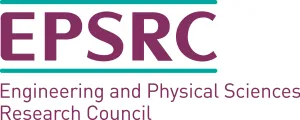The 2018 FEniCS Conference took place in lecture room L3 of the University of Oxford Mathematical Institute on 21-23 March 2018.
Description
The FEniCS’18 conference is an opportunity for all those interested in the FEniCS Project and related projects to exchange ideas, communicate their results and network with the automated scientific computing community. We welcome developers, existing and potential users of the FEniCS ecosystem as well as mathematicians, computer scientists and application domain specialists interested in numerical methods, their implementation and applications.
The FEniCS’18 conference will emphasise an open and inclusive atmosphere, contributed talks from a diverse range of scientific areas, and dedicated time for discussions and coding.
Important dates
- Abstract submission: 24 August 2017-14 February 2018. Update: extended to 21 February 2018.
- Application for travel support: by 21 December 2017.
- Booking discounted accommodation in Oriel college: by 6 March 2018.
- Registration: by 16 March.
- Conference: 21-23 March 2018.
Schedule
The schedule is available on easychair. Abstract submission is now closed.
Features
- Single track session for talks.
- Dedicated poster session.
- Plenty of time for informal discussions and coding.
- Best student and postdoc presentation prize.
- Conference dinner on Wednesday 21 March held in Oriel college, founded 1326.
Conference Venue
The conference will be held at the Andrew Wiles Building, Radcliffe Observatory Quarter, Woodstock Road, Oxford OX2 6GG, UK.
The Andrew Wiles Building, opened in 2013, is located on the north side of the city centre. It lies within walking distance of all accommodation in central Oxford, and within a short bus or bicycle ride of most accommodation in the city.
The conference dinner will be held in Oriel College, Oriel Square, Oxford OX1 4EW, UK.
Oriel college was the fifth to be founded in Oxford, in 1326. It is located in the city centre, just off the High Street.
Getting to Oxford
Here are the main options.
- Fly to Birmingham airport (BHX), and take a train from Birmingham International (BHI) to Oxford (OXF). The train takes approximately one hour and leaves approximately every hour. If your flight arrives in late, make sure to check the train times in advance.
- Fly to Southampton airport (SOU), and take a train from Southampton Airport Parkway (SOA) to Oxford (OXF). The train takes approximately 1.25 hours and leaves approximately every hour. If your flight arrives in late, make sure to check the train times in advance.
- Fly to London Heathrow airport (LHR), and take a coach to Oxford. The coach takes approximately 1.5 hours and leaves every 20-30 minutes.
- Fly to London Gatwick airport (LGW), and take a coach to Oxford. The coach takes approximately 2-2.5 hours and leaves every 30-60 minutes.
- Take the Eurostar to St. Pancras, take the London underground to Paddington (20 minutes), and take a train from Paddington to Oxford (1 hour).
If you have more time
Oxford is a beautiful city, and is well worth seeing for a few days before or after the conference. If you have more time, you could visit the following nearby attractions:
- Blenheim Palace (the birthplace of Winston Churchill).
- the Roman baths at Bath.
- Stonehenge.
- the Cotswolds.
- the Brecon Beacons, a national park in Wales.
Travel awards
NAG and NumFOCUS have kindly offered to support travel awards for attendees who would otherwise struggle to come to the conference for financial reasons, e.g. junior students and researchers or those working in countries with a less developed research infrastructure. Applicants are strongly encouraged to submit a poster or talk abstract to the conference as well.
To apply for a travel award, send an email explaining the situation to patrick.farrell@maths.ox.ac.uk. The cut-off date for applications was December 21 2017.
Local organising committee
- Patrick E. Farrell (patrick.farrell@maths.ox.ac.uk).
- Florian Wechsung
- Matteo Croci
Sponsors
FEniCS’18 is supported by the University of Oxford, the Engineering and Physical Sciences Research Council, NumFOCUS and NAG Ltd.




